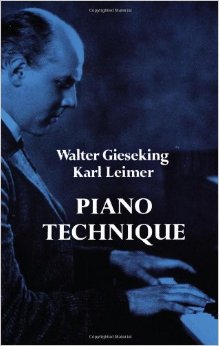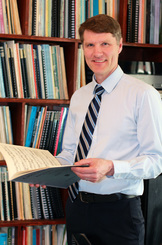
When teaching, it is necessary to consider many aspects at once, including physical requirements, musical and historical aspects, and theory. All are indispensable for becoming a well-rounded musician. Attending to the physical side is necessary so that there can be ease of execution. If proper positioning and movement are worked on from the beginning one can eliminate most of the common problems that result from too much tension in the wrists, elbows and shoulders. Musical and historical aspects, on the other hand, aid in giving the process of learning an emotional, intellectual, and spiritual fulfillment. And regular discussion of the theory behind the notes simply allows the student to read and comprehend the flow of the music with greater rapidity and fluency. If one continually teaches harmony through the pieces that are being learned, it will make for better reading, memorizing and improvising in the long run. Two of the finest short books on how to play the instrument are Piano Technique by Gieseking and Leimer and Basic Principles in Pianoforte Playing by Josef Lhevinne.
Further thoughts on teaching, along with comments on other (mostly musical) matters, may be found here, and over time will also be discussed on my blog. For physical reasons, the progress of my piano career was permanently interrupted and life, as they say, took other paths. As a result, I have no playing samples from a good portion of my adult life. However, if you are interested, you can hear audio-only live recordings, warts and all, of ten Etudes by Chopin taken from a recital in 1991 by clicking on the links below. The sound quality (from a cassette almost 25 years old) is merely adequate. However, the the piano, a 9-foot 6-inch Boesendorfer (the one with 92 keys), was very fine indeed, and some of its tonal quality still manages to shine through. For curiosity, the last example in the following list is Chopin's "Military" Polonaise, Op 40 No 1, played at my oldest sister's wedding when I was thirteen years old. The piano, a battered upright in a rural town hall in Northern Saskatchewan, is in wretched condition, but the performance went ok so I thought I would include it anyway. |
|
|
|
|
|
|
|
|
|
|
|
|
|
|
|
|
|
|
|
|
|
|
|
|
The following live recording comes from my oldest sister's wedding, when I was 13 years old. The piano is an old and battered upright at the local town hall in northern Saskatchewan where I grew up |
|
|


